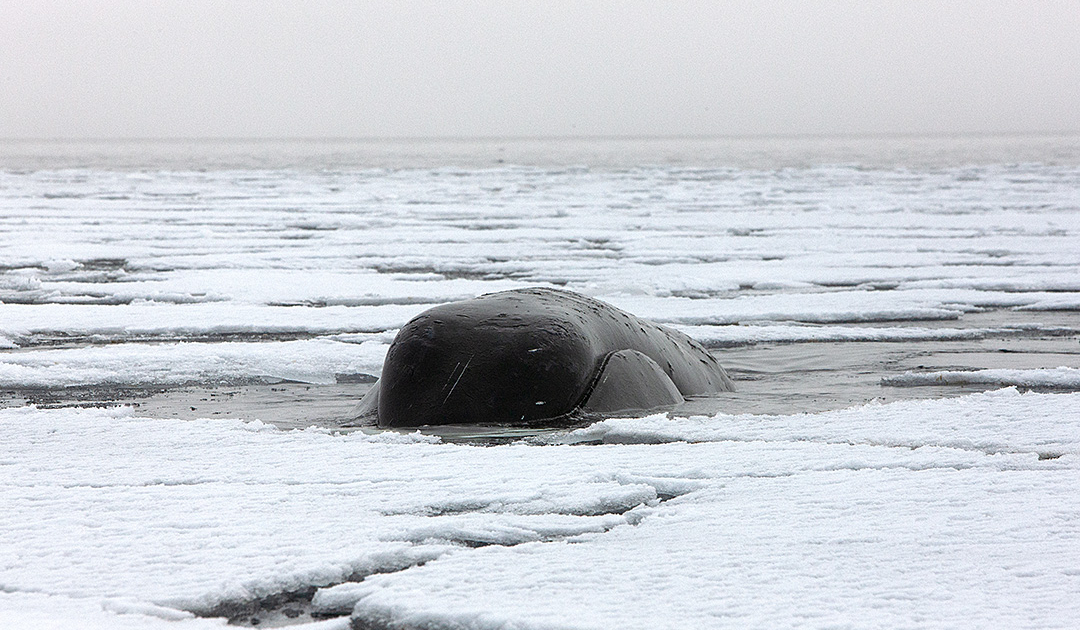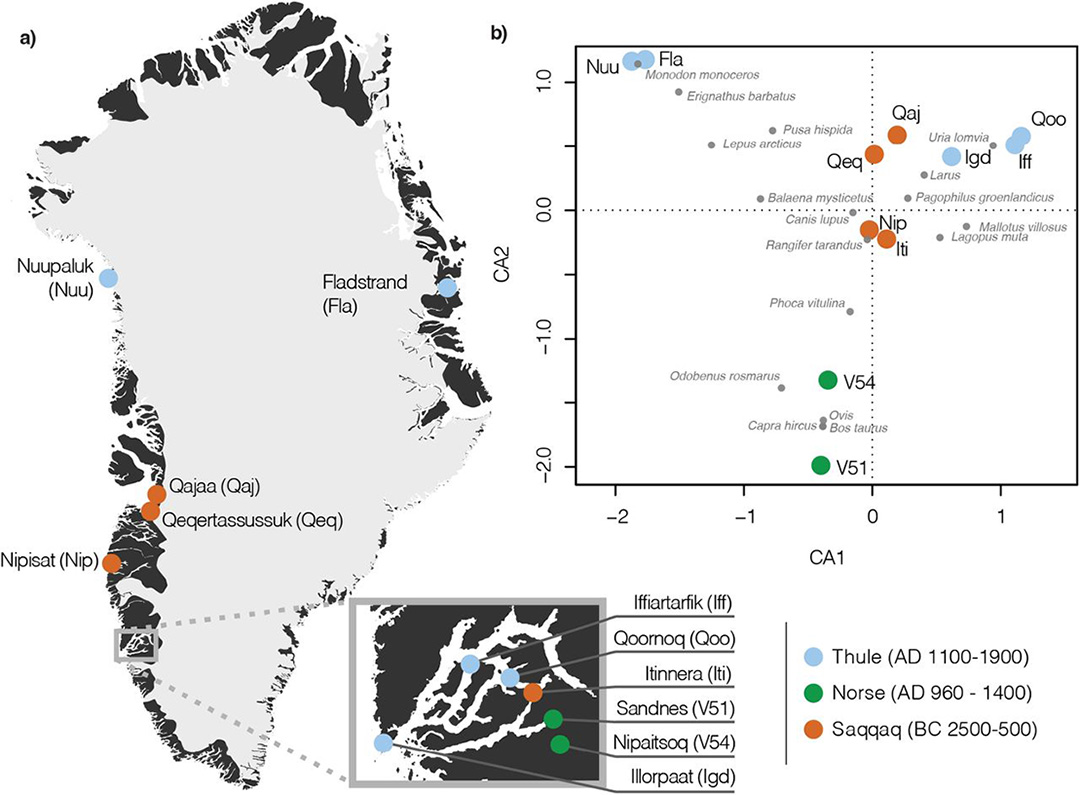
The early settlers of Greenland, which include successively the Saqqaq, Norse and Thule, had developed very successful survival strategies despite the adverse conditions. For a long time, researchers have assumed that these peoples hunted whales, seals, birds and fish. The fragmentary archaeological finds from the early settlement sites, however, could not yet provide sufficient information about the species on which they lived. So in a new study, an international research team led by the University of Copenhagen analyzed DNA from 2,500 bone fragments and identified 42 species, including the bowhead whale, an already extinct dwarf reindeer and several species of fish and birds. The study was published in the journal Nature Human Behavior.
The Saqqaq people, the first settlers in Greenland, reached the island about 4,500 years ago and established settlements along the coasts. For about 1,700 years, they were able to defy the difficult conditions and successfully use the available resources. However, after that they disappeared, probably due to a cooling of the climate.
They were followed by the Dorset culture from about 800 B.C. to about 1300 C.E.. Around 985 C.E., the Norse reached South Greenland, where they founded two settlements, where they lived until the middle of the 15th century.
The last settlers to arrive in Greenland sometime in the 13th century were the Thule, who have persisted to this day.

Based on the archaeological findings, researchers previously assumed that the Saqqaq did not hunt animals as large as whales, as they apparently did not have the necessary equipment. At least, such signs could not be found in Saqqaq settlements. The Thule, on the other hand, used the umiaq, a large skin boat, harpoons and other hunting weapons that enabled them to capture all kinds of animals, from small birds and fish to seals and whales.
What species exactly the different peoples hunted cannot be clearly determined from the remains of animals from the archaeological sites. Although the shape of the bones provides information about the species, intact bones are very rare. Only DNA analysis of the bone fragments could help with the identification of the animal species used at that time.
The 2,500 bone fragments studied came from 12 archaeological sites in East and West Greenland, which the research team was able to assign to 42 animal species, including 20 mammal, 13 bird and nine fish species. They most frequently found remains of harp seals, as well as bearded seals, narwhals, and harbor seals. In the southern settlements of the Norse, the team was also able to identify remains of sheep, goats and cattle. The most common fish is capelin. Birds identified include several species of gulls, sea ducks, and rock ptarmigan.

What is remarkable, however, is the wide variety of cetaceans the researchers found in the fragments. They discovered five different species with the bowhead whale as the most common, followed by the narwhal. They were even able to identify sperm whales and fin whales. The latter, however, may have been used only when stranded or washed up on the coast. Bowhead whales, on the other hand, were regularly hunted by all cultures in Greenland, including the Saqqaq thousands of years ago.
The researchers also found evidence in a Saqqaq settlement of a previously unknown genetic variant of reindeer that lived in southwest Greenland 4,000 years ago. This population, or possibly subspecies, was smaller than modern reindeer and is probably now extinct.
Thanks to DNA analysis of archaeological finds, it was possible to draw a much more accurate picture of the life of ancient cultures in Greenland.
Julia Hager, PolarJournal
More on the subject:





